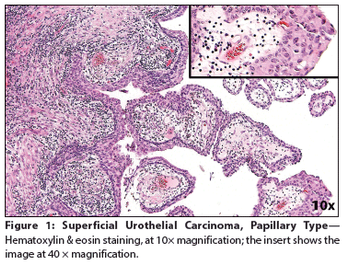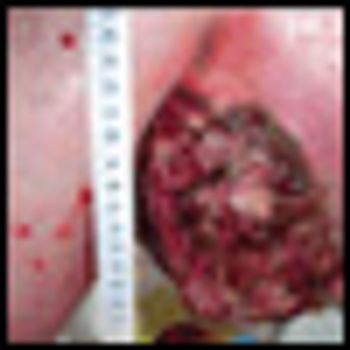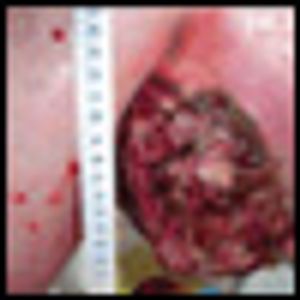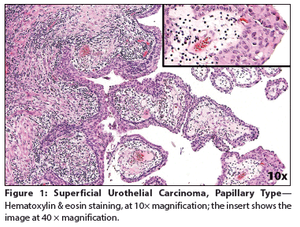
This video highlights studies on HPV-positive head and neck cancer presented at the 2017 ASTRO Annual Meeting.

Your AI-Trained Oncology Knowledge Connection!


This video highlights studies on HPV-positive head and neck cancer presented at the 2017 ASTRO Annual Meeting.

A 65-year-old woman presented to a local emergency department complaining of right flank pain that had worsened over the past 10 days. A CT scan of the abdomen and pelvis showed intravesical tumors of the urinary bladder.

Locoregional recurrences are a major source of morbidity and mortality for patients with squamous cell carcinomas of the head and neck (HNSCC).

Fifteen years from now, graduate business school students seeking a PhD in medical economics will write dissertations on the topic of proton therapy and its place in the health care reform efforts of the 2010s

The patient is an otherwise healthy male transferred from an outside hospital with a newly diagnosed melanoma from an unknown primary presenting as a large, left axillary mass.

The treatment of head and neck cancer has been at the forefront ofnovel therapeutic paradigms. The introduction of drugs that interactwith selective biologic pathways in the cancer cell has generated considerableattention recently. A wide variety of new compounds that attemptto target growth-signaling pathways have been introduced intothe clinic. A majority of studies in the clinic have focused on epidermalgrowth factor receptor (EGFR) antagonists, but future studies will likelybuild upon or complement this strategy with agents that target angiogenicor cell-cycle pathways. EGFR activation promotes a multitude ofimportant signaling pathways associated with cancer development andprogression, and importantly, resistance to radiation. Since radiationtherapy plays an integral role in managing head and neck squamouscell cancer (HNSCC), inhibiting the EGFR pathway might improveour efforts at cancer cure. The challenge now is to understand whenthe application of these EGFR inhibitors is relevant to an individualpatient and how or when these drugs should be combined with radiationor chemotherapy. Are there molecular markers available to determinewho will respond to EGFR inhibitors and who should be treatedwith alternative approaches? What are the mechanisms behind intrinsicor acquired resistance to targeted agents, and how do we preventthis problem? We need to formulate integrated laboratory/clinicalresearch programs that address these important issues.

The patient, L.E., is a 72-year-old white male who has been under our care for 10 years. He initially presented to our clinic in 1992, with a diagnosis of localized prostate cancer.

A phase I, single-center, open-label, dose-escalation study (University of Alabama [UAB] 9614) has been undertaken to evaluate the feasibility and safety of uracil and tegafur (in a molar ratio of 4:1 [UFT]) plus oral

Published: June 1st 2006 | Updated:

Published: June 15th 2011 | Updated:

Published: October 15th 2011 | Updated:

Published: August 1st 2002 | Updated:

Published: June 15th 2015 | Updated:

Published: July 1st 1999 | Updated: